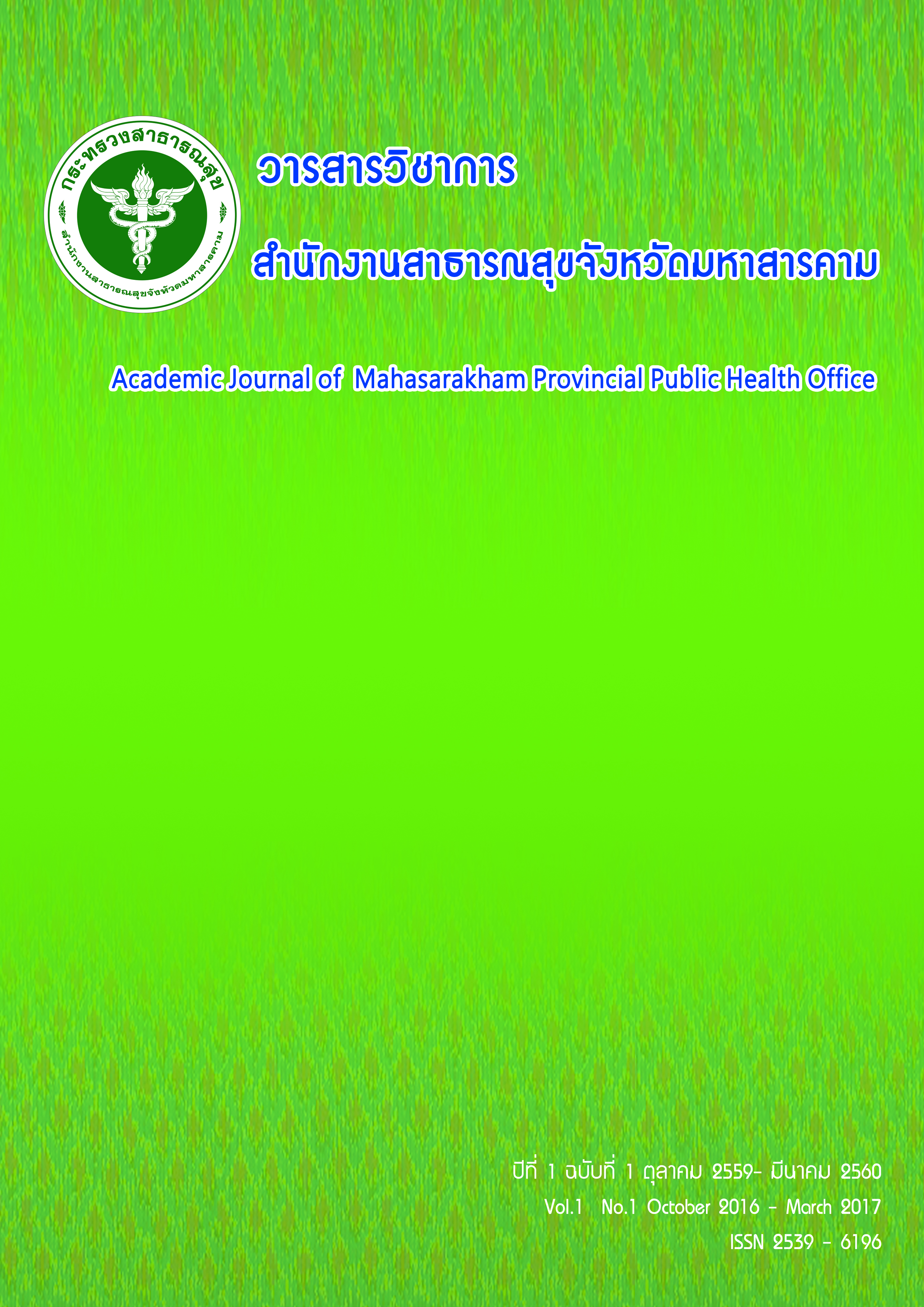The effects of a wand exercise on severity of pain and physical function in persons with rheumatoid arthritis
Abstract
Abstract
At present, a wand exercise is popular in community of Thailand. However, there was no study about its effects in persons with rheumatoid arthritis (RA). The aimed of this randomized control trial were: (1) compared the severity of pain between the experimental group and control group (2) compared the physical function between the experimental group and control group (3) compared the severity of pain between before and after exercise in the experimental and control group (4) compared the physical function between before and after exercise in the experimental and control group.
The participants in this study were forty-five persons in the experimental group and 44 persons in control group. The experimental was instructed to perform a wand exercise. The control group was instructed to perform a conventional exercise. The exercise prescription was 20 minutes/day, 3 days/week for 6 weeks. Outcome measures were severity of pain and physical function assessed by Visual Analog Scale and Health Assessment Questionnaire (Thai version), respectively. The participants underwent pre-exercise assessment and were reassessed immediately after the completion. Data were analyzed by Kruskal Wallis Test for the hypothesis 1 and 2, Wilcoxon Signed Rank Test for the hypothesis 3 and 4. The results showed that the severity of pain and physical function were no significant differences when comparisons between groups. However, when compared with baseline, the participant in both groups showed significant decrease in pain intensity and improve physical function after receiving the exercise. In conclusion, the wand exercise could be applied for promotion health status of persons with RA as an alternative exercise regimen.
Keywords: wand exercise, physical function, persons with rheumatoid arthritis


